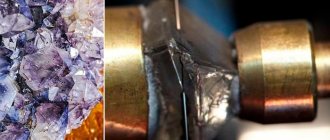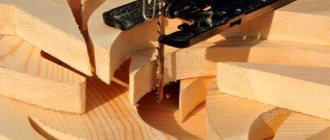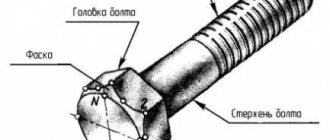Shiny output: grinding, tumbling, polishing
Before reaching the store window, jewelry must go through many stages of production. Today we will tell you about where products end up after the foundry.
Grinding
Jewelry cast in metal can hardly be called flawless. It is for this purpose that they go to the polishing area, where the skillful hands of jewelers bring the product one step closer to perfection.
Grinding is necessary in order to give the metal surface a certain purity and precise dimensions. So, the craftsmen level the place of the cut sprue, which was used to attach the product to the wax rod of the tree, or remove the flash - that is, excess metal that could have formed during the casting process.
For this, a special machine with a grinding wheel consisting of small carborundum crystals is used. The grinder brings the product to the wheel, “removing” excess metal. To work out the smallest details, a hand tool is used - a drill with many attachments that differ in size and hardness, or a file.
Only after manual grinding does the product pass to the tumbling section.
Galtovka
This jewelry production area resembles a huge kitchen, where in each “pot” something is prepared under the strict guidance of an experienced chef. True, instead of “kitchen utensils” in tumbling there are huge rotating drums, and jewelers play the role of chef.
Tumbling is actually a jewelry cleaning process that combines grinding and polishing. Products are placed in rotating drums with special polishing agents or reagents. Typically, tumbling involves two steps: wet sanding and dry polishing - but for some products only dry finishing is sufficient.
First, the decorations are placed in a rotating drum, into which a buffer solution with reagents is poured. The reagents can be detergents and polishes, as well as a solution of caustic soda, slaked lime, soda ash and some other substances that speed up the cleaning process. At the same time, special small steel balls are placed in the drum.
After a certain time, the contents of the drums are poured into a container that looks like a huge sieve. Everything that is not needed goes away, but the cleaned jewelry remains.
The second stage is dry polishing. The principle of tumbling is the same, only instead of solutions, dry abrasives are poured into the drums: ceramics, porcelain, plastic, corundum and even walnut shells, which, according to tumbling jewelers, cannot be compared with any synthetic material. The buried figures have the shape of a pyramid, cone, cylinder or ball.
Specialists not only load and remove products, but also monitor the time: it is important to correctly set the operating parameters of the equipment and not damage the metal and design elements of the jewelry.
Polishing
To “brine the shine” the product is sent to polishers.
Using a polishing machine or manually using a drill with special attachments, jewelers make jewelry incredibly smooth and shiny.
Unlike sanding, polishing does not use harsh abrasives, but only smooth or soft materials such as felt, felt or wool. Before starting work, the product must be degreased. To reduce friction and remove possible fine chips, so-called polishing water (soap solution with ammonia) is used.
First, the product is processed from the inside (if necessary), and then from the outside. The polisher, as it were, draws strokes on the surface of the metal, first in one direction, and then “across” so that there are no stripes.
Only after this does the jewelry acquire a shine worthy of the precious metal. It must be said that some products are polished not only at this stage of production, but also later, after the stones are set.
Definition
Grinding is an operation that allows you to level the surface of a solid material and involves the use of abrasives.
Grinding
Polishing is an operation carried out in order to smooth the surface as much as possible until a characteristic shine appears.
Polishing
Grinding
This is the simplest type of processing, which involves applying an abrasive to the end of the sheet. It is almost never done manually: there is too great a risk of cutting the skin or destroying the original material. That's why mirror grinding is done on a machine. Industrial processing allows you to remove all large peaks and bumps, while maintaining the specified parameters. The end result is rough but safe matte edges. In most cases, this processing is sufficient.
What power tools will you need?
For manual work, we recommend using grinders with water supply. And also with speed control, but not every machine with speed control is suitable for processing natural stone.
Required speed range for the machine: 400-4500
rpm (required recommended speed for working with grinding and polishing wheels with a diameter of
100
mm).
Also, if you do not have the opportunity to purchase a machine with speed control, it is possible to use a machine with constant speed in the range 3000-3700
(for working with circles with a diameter of
100
mm).
In the case of machines with speeds over 4500
rpm, some craftsmen manage to achieve good polishing, but during work they have to constantly “open” the tool
When the diamond located on the surface of the polishing and/or grinding wheel has exhausted its service life, it is necessary to remove the layer of the binder (“ligament”) and open new diamonds, at the correct speed and pressure - this happens by itself, at increased speeds, you have to resort to processing abrasive material (for example, it is possible to open the tool on concrete)
For mechanical work on objects (for grinding and polishing floors), we recommend using rotary machines. When choosing a machine, it is important to understand what productivity you will need, how many squares per day you want to produce. Also, the choice of machine depends on what materials you are mainly going to polish.
Many polishers do not intend to deal with granite; for them, it is enough to purchase a machine with the power 2,2
kW (granite can also be polished with such a machine, but the productivity will be quite low).
To polish granites and quartzites, you need machines with a power of 3 kW (for example: Floor grinding machine 430-IN 3.7 kW/220V CHA
), such a machine can easily cope with both marble grinding and granite grinding (when it is necessary to increase the pressure when using weights).
The key to good polishing is high-quality grinding
To work using the machine method in a workshop, we recommend using several types of machines; you can choose one or another type of machine based on the expected (calculated) productivity. Below is a table with machines that have stood the test of time and whose reliability we have no doubt about.
| Machine type and model | |
| Knee-lever machines | Model: Grinding and polishing machine ZLMS 2600 (5.5 kW/380V) VSN |
| Bridge Polishing Machine | Model: AS01.1, manufactured by Promasz (Poland) |
Grinding stainless steel
Sanded material costs less than its polished counterpart, since polishing is an additional processing carried out after grinding. Several abrasives with different grits are used in processing stainless steel. Grinding is carried out in several stages. First, the surface is treated with materials with large abrasives; in each subsequent operation, this indicator decreases. The grain size standards are reflected in GOST R 523852-2005. The indicator varies in the range of 100-2500. The number indicates the number of wires located on 1 inch of the sieve through which the abrasive is sifted. As this indicator increases, the size of the fractions decreases. Materials with fine abrasives perform fine processing and provide maximum smoothness.
Crystallization of marble surface
Crystallization is a mandatory stage in marble processing. It is designed to reduce its moisture absorption and slip coefficient, increase strength, and also give the marble pattern additional expressiveness. The process of crystallization of a marble surface is extremely simple: marble is treated with a special crystallizer solution, reacts with it, as a result of which a protective layer is formed on the surface of the stone. After this, micro-grinding and polishing of the product is carried out.











